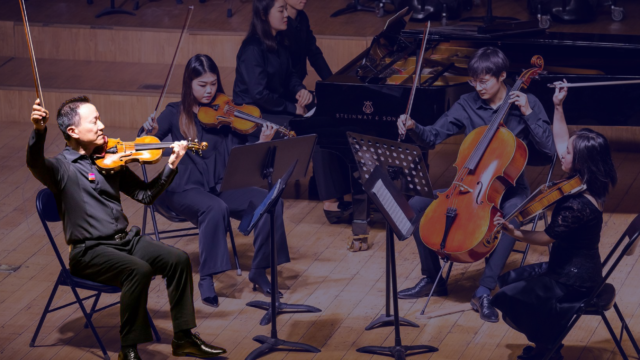Prelude and Table of Contents: Summer 2020

Suddenly, one of the most beautiful things that humans do—gather together to make music—has become one of the most dangerous. As COVID-19 metastasized across the planet, orchestras, conservatories, and concert halls postponed and then cancelled entire swaths of their seasons out of safety concerns. No one knows how long the pandemic will last, what the human toll or economic impact will be—and that includes orchestras, which are rethinking how to keep musicians, staff, and audiences safe and healthy even as they face an unpredictable crisis and precipitous loss of income. Yet in the midst of the pandemic, orchestras are keeping the music alive. Musicians are playing from their front porches; orchestras are giving concerts, with masked, socially distanced musicians, at drive-in movie theaters; everyone is performing online. Several scientific studies are underway to determine safer options for live performances. Meanwhile, orchestras are meeting this unprecedented challenge with creativity and deeper understandings of their missions.
On May 25, George Floyd, an unarmed Black man, was murdered while under arrest by a white Minneapolis police officer. Video of the tragedy sparked weeks of protests about police violence and racial injustice across the U.S. and abroad. Musicians, orchestras, and classical music organizations nationwide stepped forward with responses, many of which went beyond well-meaning statements and moved into actions. This issue of Symphony includes an in-depth article by Aaron Flagg that examines the orchestra field’s historic and ongoing lack of ethnic and racial diversity and offers ways to work toward a more equitable and inclusive future. The article addresses an important, painful topic that is seldom discussed. Yet, as James Baldwin wrote, “nothing can be changed until it is faced.”
Bob Sandla
Table of Contents
- The Score
- Critical Questions: A Career in Service to Orchestras
- Global Stages / Local Stories
- Orchestra Fundraising in Times of Crisis
- Anti-Black Discrimination in American Orchestras
- It’s About Time
- On the Right Track
- Flex Seasons
- Pandemic in Perspective
- Annual Fund: Summer 2020
- Coda: Curating a Classical-Music Reset, After the Pandemic
Related
Become a member
Thank you for your interest in the League of American Orchestras! We are dedicated to advancing the orchestral experience for all.
Join Now